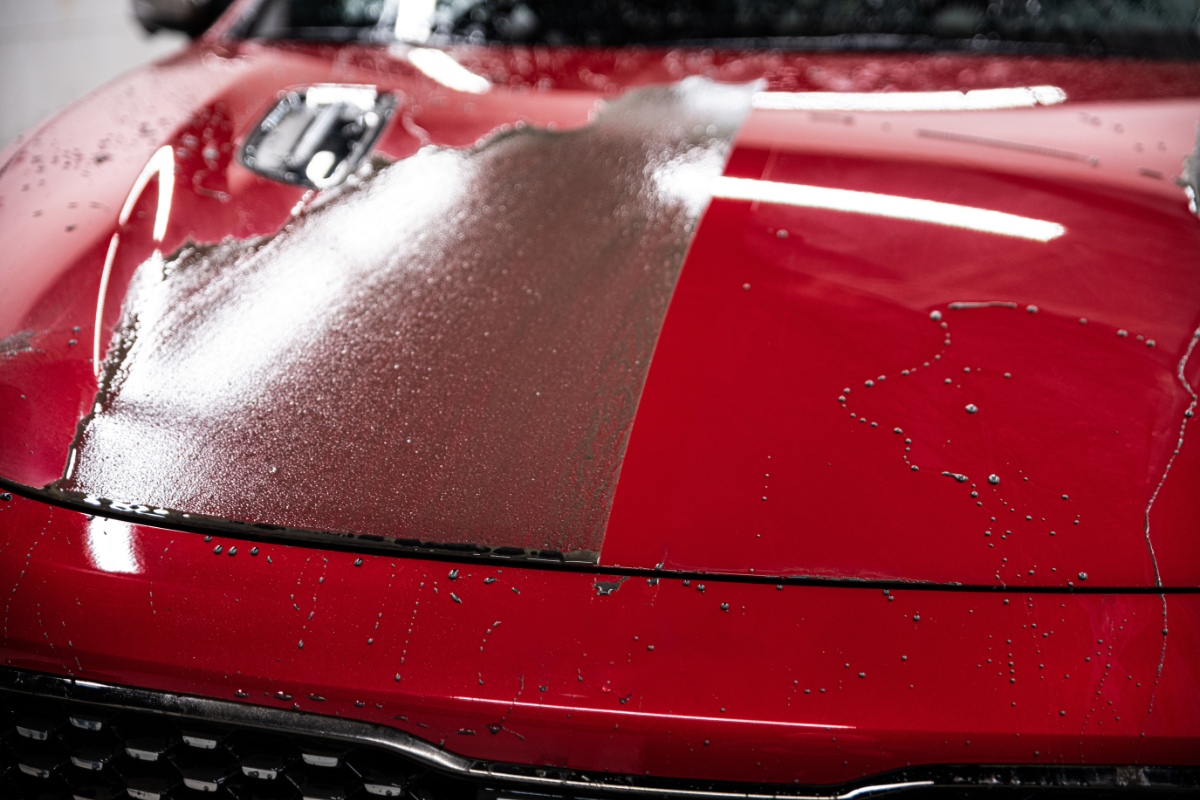A Comprehensive Guide to the Kinds Of Ceramic Layer on the Market
Ceramic finishings have arised as a critical remedy throughout various markets due to their unique residential or commercial properties and applications. From silica-based formulations known for their robustness to hybrid choices that combine several advantages, the options available can be frustrating. Recognizing the subtleties of each type, including their certain benefits and suitable usage situations, is important for making notified decisions. As we discover the unique characteristics and applications of these finishes, the ramifications for efficiency and long life become progressively noticeable, questioning regarding which kind might ideal suit your requirements.
Understanding Ceramic Coatings
Ceramic finishings are innovative safety solutions that have acquired appeal in various industries, particularly in automobile and aerospace applications. These finishes include a fluid polymer that, when cured, develops a resilient, hydrophobic layer externally of the substrate. This layer supplies boosted resistance to environmental contaminants, UV radiation, and chemical exposure, thus expanding the life and aesthetic appeal of the underlying material.
The fundamental component of ceramic layers is silica, which adds to their firmness and resilience. The application procedure commonly includes surface prep work, application of the finish, and treating, which can be achieved via warm or UV light. When treated, ceramic finishes show exceptional bonding homes, allowing them to stick strongly to a range of surfaces, consisting of metals, plastics, and glass.
Along with their protective attributes, ceramic finishes also offer convenience of maintenance. Their hydrophobic nature minimizes the adherence of dirt and crud, making cleaning easier and much less constant. In general, the fostering of ceramic finishes represents a significant innovation in surface protection modern technology, providing both practical and visual advantages across multiple markets.
Types of Ceramic Coatings
Different kinds of ceramic finishes are available, each created to fulfill specific performance needs and applications - ceramic coating sarasota. The most usual types include:
Silica-based Coatings: These coatings primarily are composed of silicon dioxide and are known for their durability and chemical resistance. They are widely utilized in vehicle and commercial applications.
Titanium Dioxide Coatings: Distinguished for their photocatalytic residential or commercial properties, titanium dioxide coverings are frequently used in atmospheres where self-cleaning and antifungal residential properties are preferable, such as in building materials and auto coatings.
Zirconia Coatings: Identified by their high-temperature stability and thermal resistance, zirconia finishings are utilized in applications such as turbine engines and high-performance auto elements.
Alumina Coatings: Displaying outstanding firmness and thermal stability, alumina coatings are regularly made use of in wear-resistant applications, consisting of reducing tools and industrial equipment. - Car Detailing
Hybrid Coatings: Combining the residential or commercial properties of various materials, hybrid coverings use boosted performance attributes, making them appropriate for unique and demanding applications.
Each type of ceramic coating serves distinct objectives, allowing customers to select one of the most proper solution based upon particular ecological conditions and efficiency demands.
Benefits of Ceramic Coatings
Coatings play an important role in improving the efficiency and longevity of surface areas across why not look here different sectors. Ceramic finishings, specifically, deal various benefits that make them increasingly preferred amongst makers and consumers alike. One of the key benefits is their remarkable sturdiness. These layers are immune to scrapes, chemicals, advice and UV rays, guaranteeing that the underlying surface continues to be protected with time.
In addition to durability, ceramic finishes offer superb hydrophobic homes, permitting for easy cleaning and upkeep. This water-repellent nature decreases the adherence of dirt, grime, and other impurities, which can prolong the aesthetic charm and capability of the surface area. Moreover, ceramic finishes can considerably boost thermal resistance, making them ideal for applications that withstand heats.

Application Refine
When applying ceramic finishings, a thorough technique is vital to achieve ideal results. The application procedure generally begins with thorough surface area prep work. This includes washing, sanitizing, and polishing the surface to remove all contaminations, including dust, grease, and prior waxes or sealers. A tidy surface ensures appropriate adhesion of the layer.
Once the surface is prepped, the next step is to apply the ceramic finish. The coating ought to be applied in slim layers, as thicker applications can lead to uneven finishes.
After application, the finish calls for a particular treating time, normally varying from a couple of hours to a complete day, depending on the item. Throughout this time around, it is vital to prevent direct exposure to moisture or pollutants. Lastly, a mild buffing might be needed after curing to boost the gloss and eliminate any high spots. Adhering to these steps vigilantly will make best use of the effectiveness and longevity of the ceramic finishing, offering a durable protective layer for the surface.
Maintenance and Durability
To make sure the longevity and efficiency of a ceramic covering, regular upkeep is important. Ceramic coatings, understood for their sturdiness and protective top qualities, require details treatment routines to optimize their life expectancy and efficiency. The primary step in maintenance entails regular go washing with pH-neutral soap, avoiding harsh chemicals that can degrade the covering. It is advisable to clean the lorry consistently, preferably every 2 weeks, to avoid the build-up of pollutants that could compromise the covering's honesty.
In addition to routine cleaning, routine assessments are important. Look for indicators of wear or damages, such as hydrophobic properties reducing or surface flaws. If essential, a light gloss might be put on revitalize the coating without removing it away.
Furthermore, the application of a booster spray can enhance the finishing's hydrophobic impacts and recover its gloss. This is specifically beneficial for coverings that have actually been in use for an extensive period. Eventually, by adhering to these upkeep practices, one can substantially expand the life of a ceramic covering, ensuring that it proceeds to supply ideal security versus ecological aspects and preserve the aesthetic appeal of the vehicle.
Verdict
